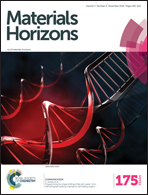Annihilation upconversion in nanoconfinement: solving the oxygen quenching problem
Abstract
This article reviews different approaches towards the protection of optically excited organic triplet ensembles in nanoconfinement against quenching and photoinduced oxidation by molecular oxygen. We compare and discuss passive and active protection. The passive protection is based on the application of high-barrier materials for the encapsulation of the active substances which prevent oxygen molecules from penetration and physical contact with the excited states, and active protection is based on the application of sacrificial singlet oxygen scavenging species. The long-term performance of different protective techniques together with the efficiency of the annihilation upconversion process in nanoconfinement are outlined.


 Please wait while we load your content...
Please wait while we load your content...